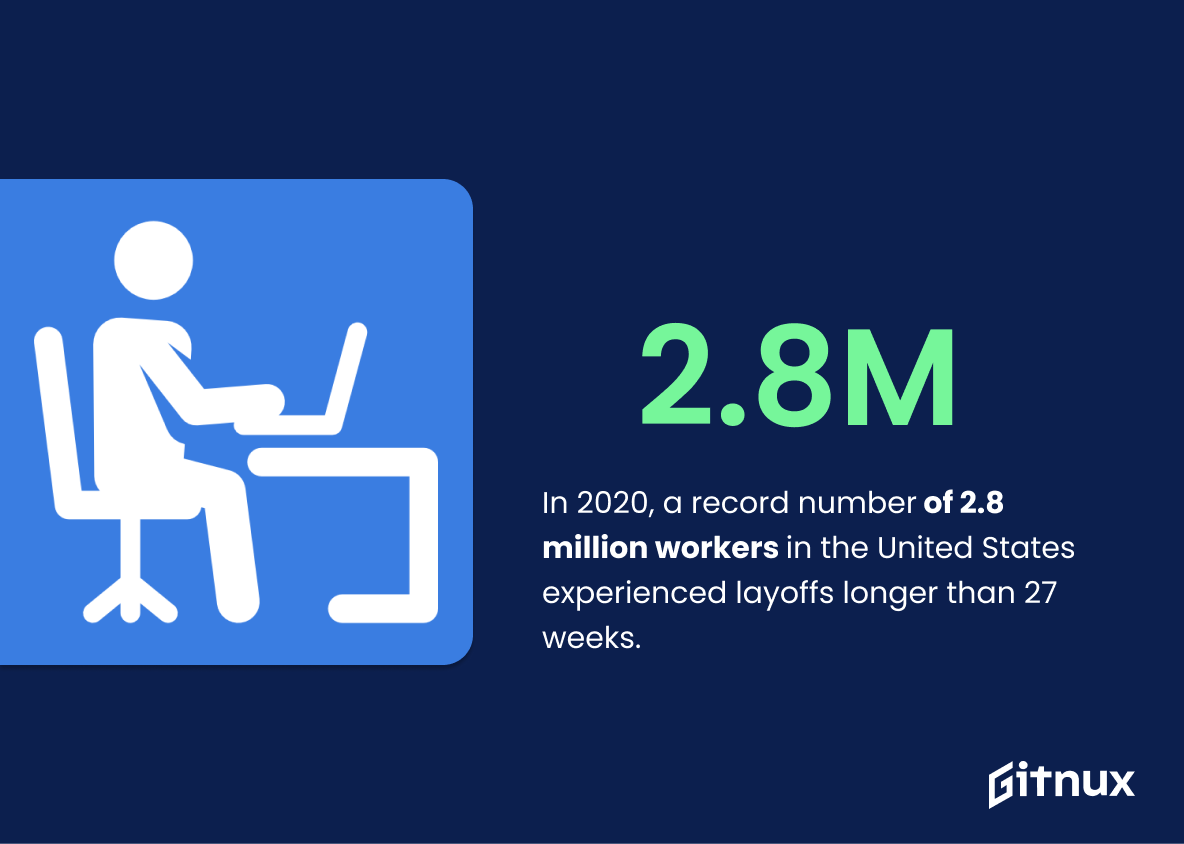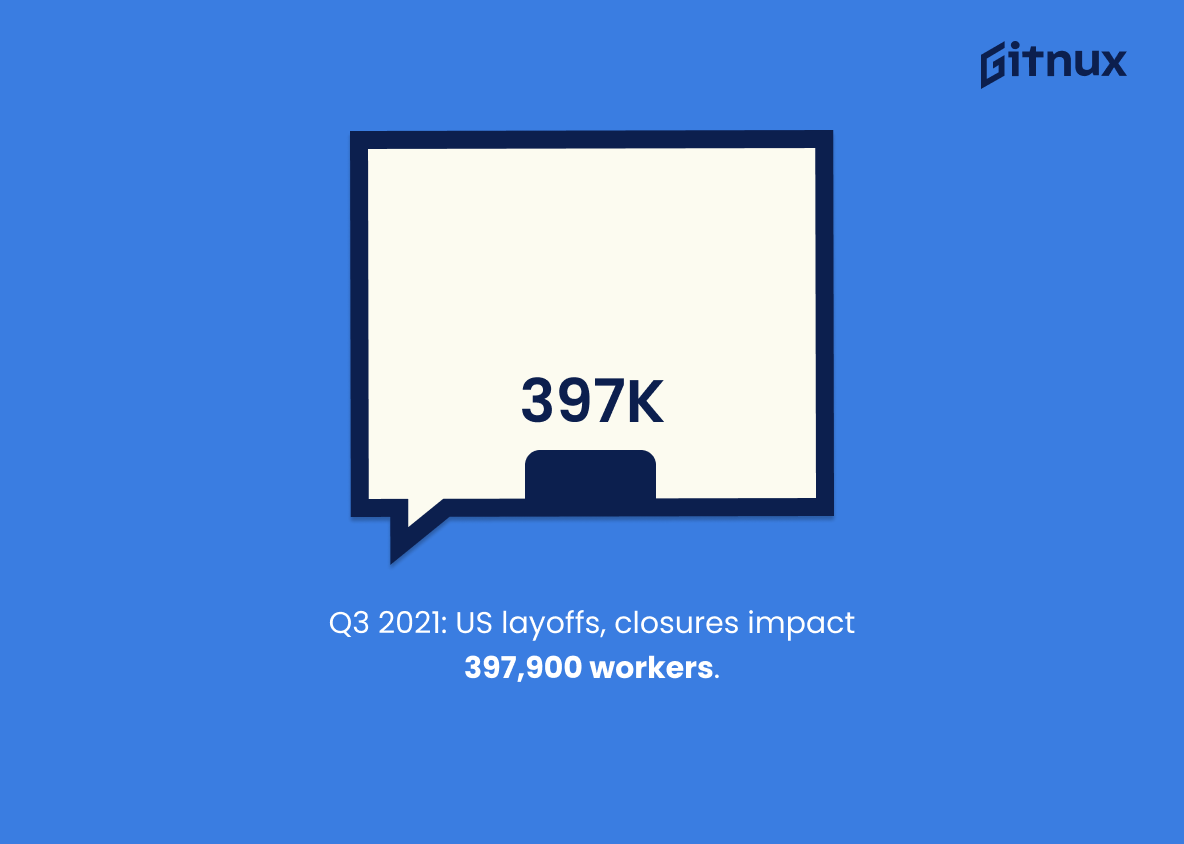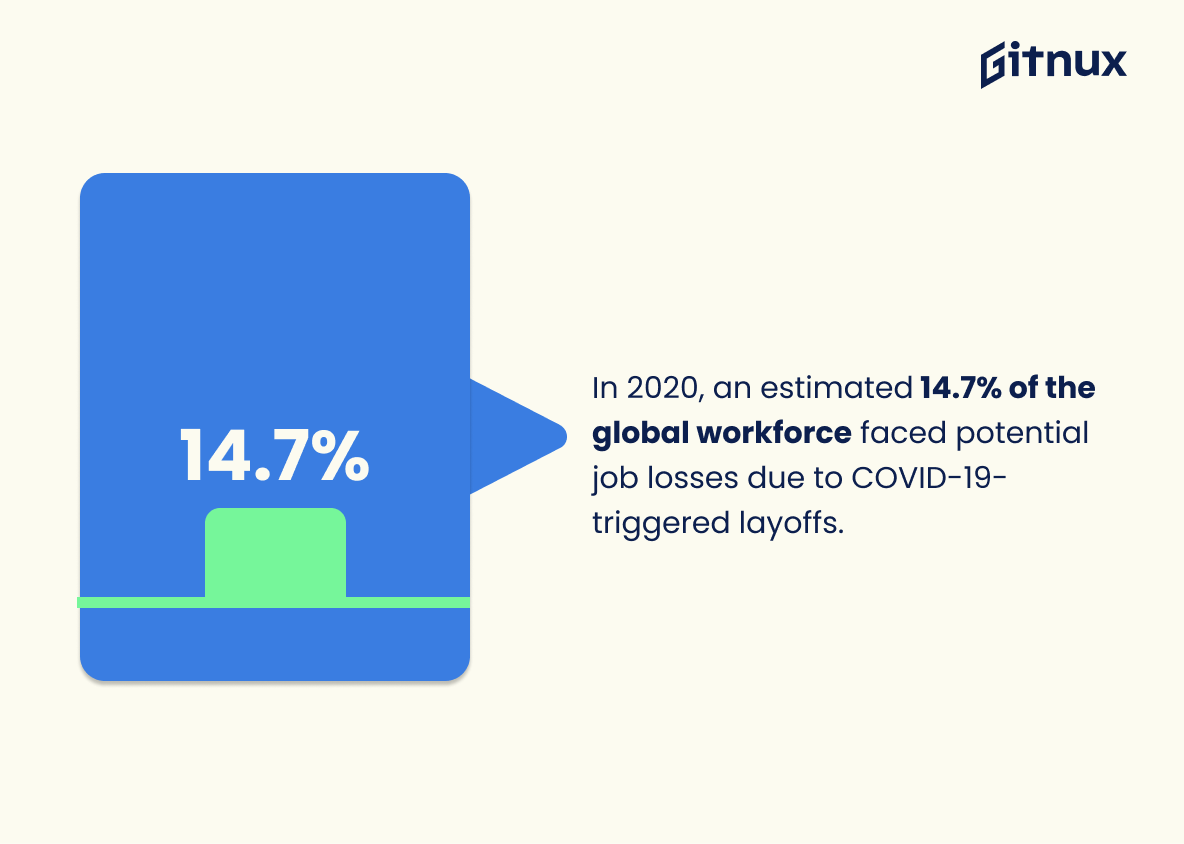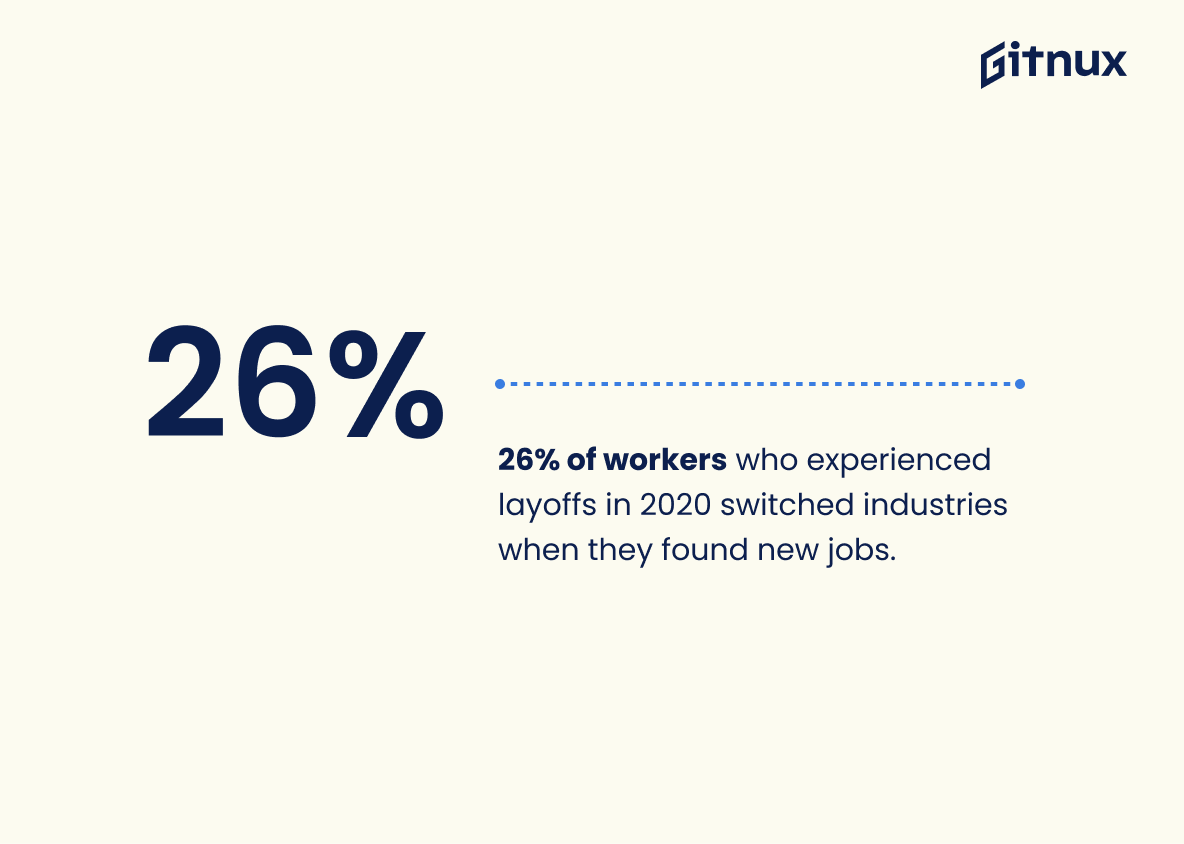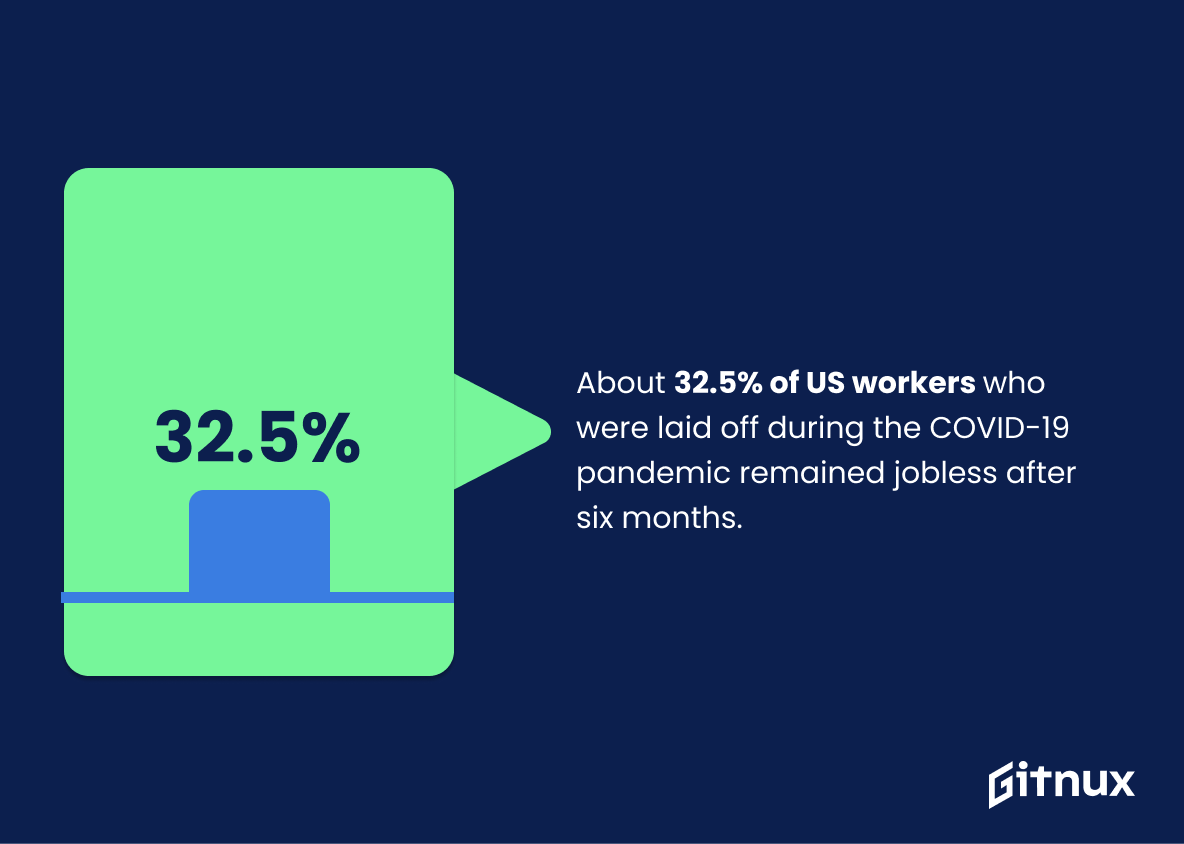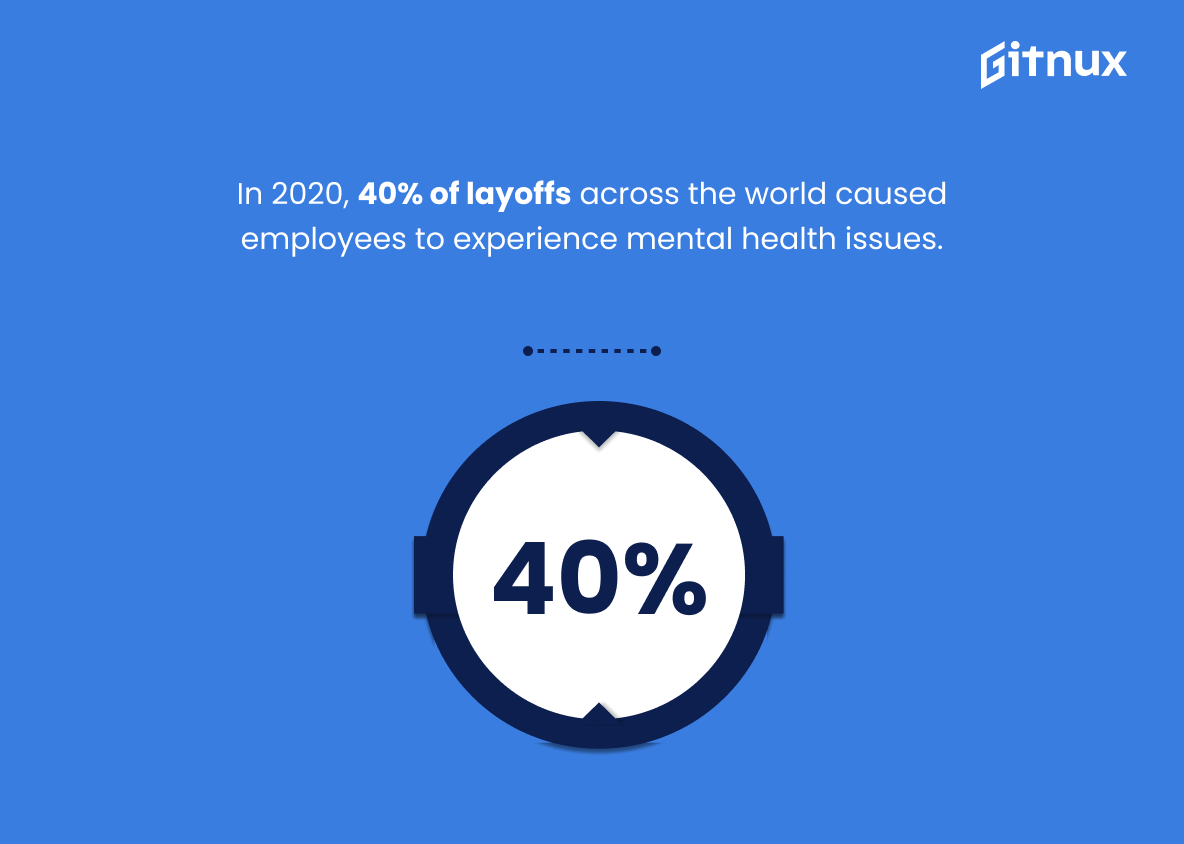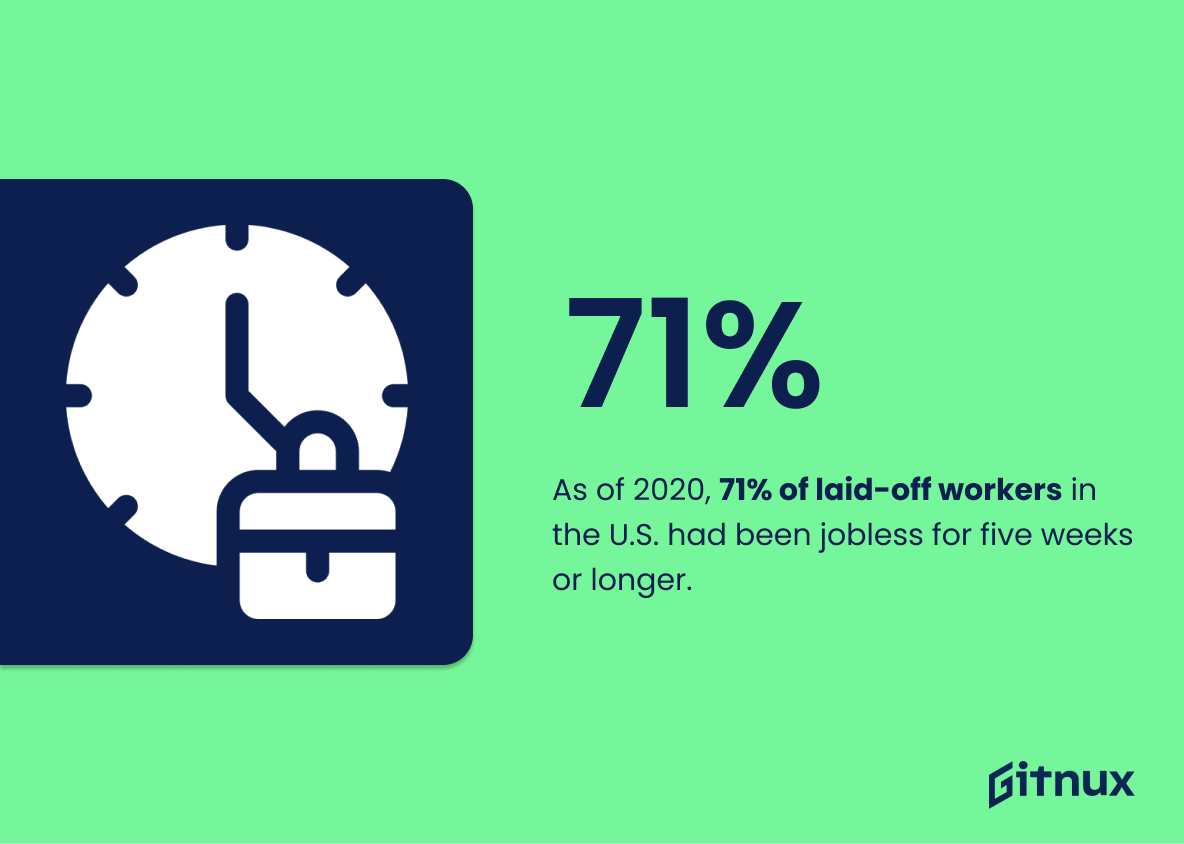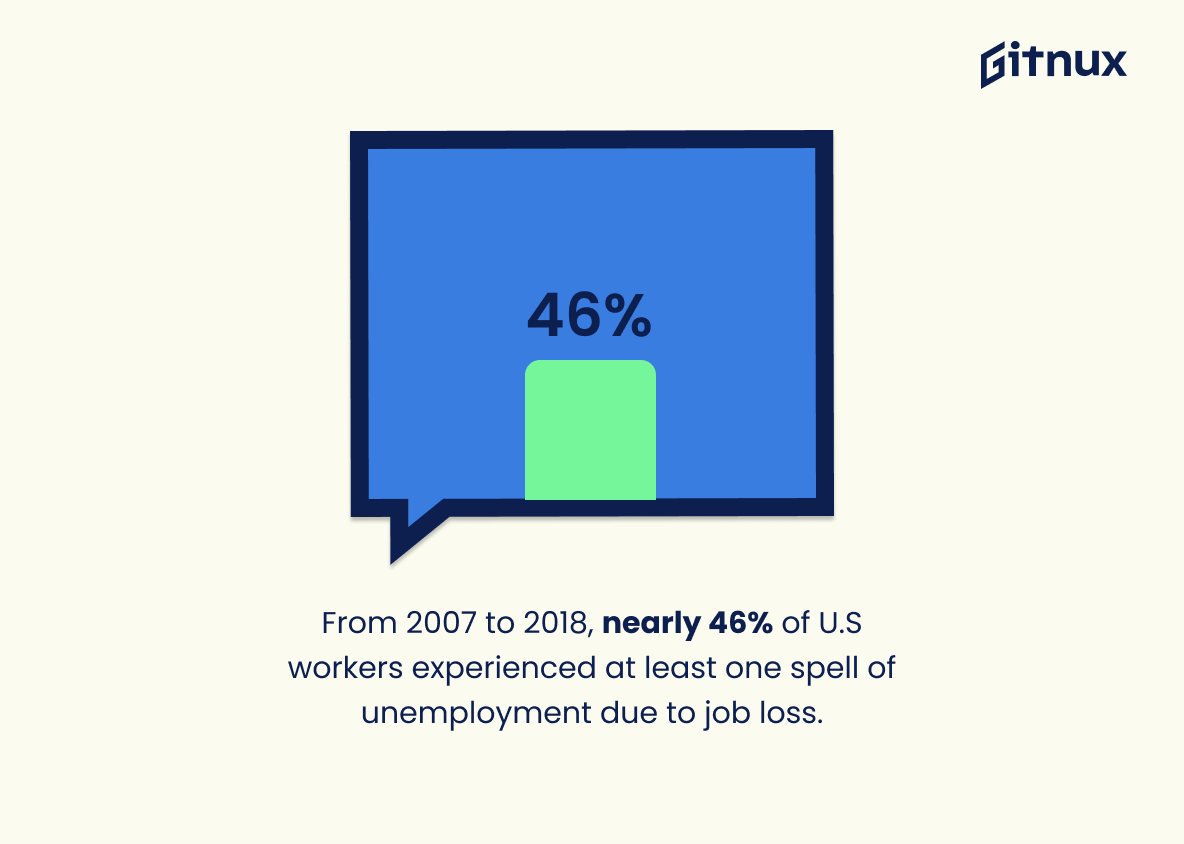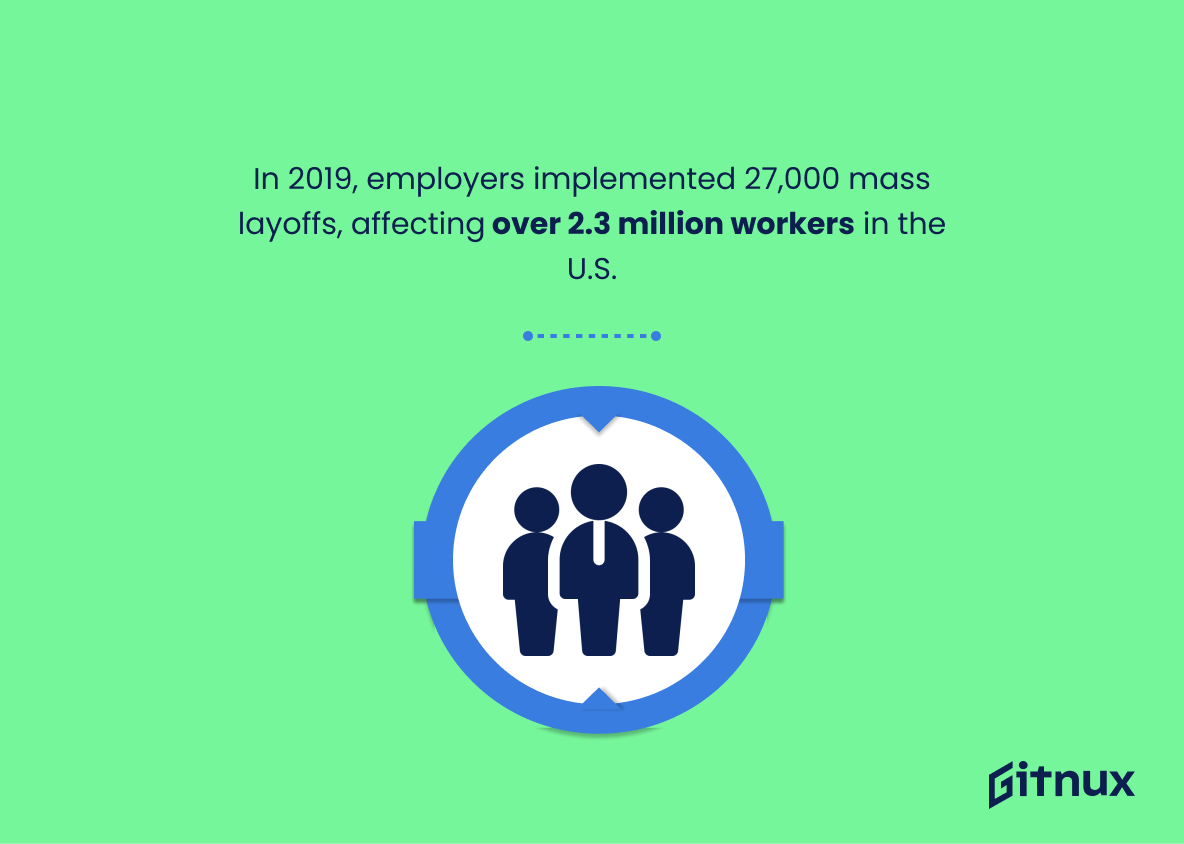In the ever-shifting dynamics of today’s global economy, layoffs have become a common occurrence and yet remain a topic shrouded in uncertainty for many. Unveiling the complexities and deciphering confusing jargon, this comprehensive blog post aims to shed light on the most recent layoff statistics. From analyzing the reasons behind mass layoffs to understanding their impact on various industries globally, we will explore the depths of this issue.
We aim to present these statistics and figures not as just numbers, but as intricate narratives encapsulating the realities of the modern-day workforce and job market. So, whether you’re an employee wanting clarity, an employer looking to discern patterns, or simply someone interested in labor market trends, this blog post holds valuable insights that will broaden your understanding of layoff statistics. So, let’s dive in and begin this fact-filled journey.
The Latest Layoff Statistics Unveiled
In 2020, a record number of 2.8 million workers in the United States experienced layoffs longer than 27 weeks.
One can appreciate the gravity of the 2020 statistic revealing a record 2.8 million U.S workers facing extended layoffs, i.e., over 27 weeks, by diving deeper into its implication on the nation’s socioeconomic stage. Peeling off the layers of this number, we’re led into an alarming reality reflecting not just the economic turbulence, but the long-term impacts on the welfare of individuals, families, and communities, becoming a significant talking point in layoff data analysis.
In a year where the unexpected has become the norm, this statistic stands as a chilling testament to the extent of economic upheaval. It helps one comprehend the magnitude of the situation—millions of stories of vulnerability, resilience, and struggle hidden behind the cold, stark number of 2.8 million.
Moreover, regarding the long duration of the layoffs—exceeding 27 weeks, it magnifies the perilous path these workers tread. Such a lengthy unemployment period often results in eroding professional skills and creating gaps in resumes that worry future employers, further constraining job opportunities.
Thus, this statistic surfaces as a critical piece in understanding the full extent and profound implications of job layoffs. It is more than just a number; it’s an echo of distress, a call for intervention, and a marker for policy evaluation and development.
In the third quarter of 2021, U.S. employers reported that 397,900 workers were affected by layoffs or plant closures.
Drumming the focus into the arena of layoff statistics, the fresh data from the third quarter of 2021 serves as a thunderous roar. With a staggering count of 397,900 U.S. workers caught up in the whirlpool of layoffs or plant closures, this statistic represents the vibrant heartbeat of our discourse. It paints a vivid panorama of the dynamic labor market, resonates with the trials of American workers, and amplifies the changes thrust upon employment landscapes.
To graze past this stat would be akin to missing a crucial beat in the rhythm of our narrative. Therefore, let this figure not simply be a figure, but a barometer of the dramatic workforce shifts and a testament to the resiliency required of American workers in these challenging times.
As of 2020, the manufacturing industry saw the highest number of layoffs in the U.S., with over 500,000 job cuts.
Delving into the striking layoff statistics, it is apparent that the manufacturing industry has been significantly affected. In 2020, the United States saw the manufacturing sector topping the charts with over 500,000 job cuts. This information serves as a potent reflection of the industry’s health and its impact on the national economy. In a broader perspective, it sheds light on job stability in this sector, offering insights into the fluctuations in the job market.
The blog readers who are industry stakeholders, economists, potential employees or even policy makers, may forge strategies for economic recovery or personal career decisions based on this crucial data. Therefore, the inclusion of this statistic in the discussion profoundly enriches the narrative on layoff statistics in the U.S.
In 2020, an estimated 14.7% of the global workforce faced potential job losses due to COVID-19-triggered layoffs.
Reflecting upon this striking figure, an estimated 14.7% of the global workforce potentially facing job losses in 2020 due to COVID-19 layoffs, substantiates the profound role that unprecedented events can play in employment trends. This evaluation not only underscores the vulnerability of our world’s working population during such global crises, but it also offers a significant benchmark for future comparison. Hence, it provides a worthy centerpiece for a discussion about layoff statistics, shedding light on the larger narrative about employment security in the face of unpredictable catastrophic events.
The highest number of layoffs recorded in a single month was in April 2020 when 20.5 million jobs disappeared due to COVID-19.
Revitalizing the magnitude of the layoff phenomena brought forth by COVID-19, the punch-in-the-gut reality is crystalized by an alarming figure from April 2020, a staggering drop of 20.5 million into the abyss of unemployment. Not only does this solitary statistic embody the severe economic impact of the global pandemic, it also serves as a stark indicator of the acute instability faced by workers across varied sectors.
It marks a historic economic upset that casts shadows on every sector of the job market and provides somewhat of a yardstick against which the recuperation efforts for the labor market are measured. It’s a chilling reminder of the rapidity with which occupational landscapes can be altered, and remains a crucial component in discussions on job security and unemployment trends.
In 2020, roughly 1 in 4 workers in the U.S. had been laid off or furloughed due to the pandemic.
Unveiling the stark reality of the workforce climate, the 2020 statistics demonstrate a seismic shift in U.S employment patterns. An astounding “1 in 4 workers had been furloughed or laid off due to the pandemic,” serving as a striking highlight in a discussion around layoff statistics. This figure not only underscores the mammoth impact the pandemic had on job security, but it also signals the potential for severe socioeconomic consequences.
It propels us to delve further into layoff trends, stimulating vital discourse on policy changes, unemployment benefits, and resilience of various industries. Ultimately, it catalyzes thoughts around societal resilience, workforce adaptability, and economic recovery in challenging times.
About 38% of layoffs globally were permanent job losses in 2021.
Reflecting on the potency of the given figure, which states that “About 38% of layoffs globally were permanent job losses in 2021”, we find ourselves standing at a critical vantage point in understanding layoff trends on an international scale. This potent slice of data signals more than just mere numbers – it encapsulates the shifting dynamics of job security in the face of modern challenges, such as technological revolution, retrenchments and the overwhelming impact of the pandemic.
This number serves as an augury of the reality that the concept of layoffs has been transformed from temporary job losses into lasting ones. With nearly two-fifths of such instances becoming irreversible, it underlines the urgent need for robust responses and solutions from businesses, governments, and job seekers alike.
Indeed, this 38% induces businesses to delve deeper into sustainable work models that can withstand various challenges or disruptions. For governments, it pinpoints the need to develop resilient economic models that can safeguard their citizens against colossal unemployment crises. On the other hand, for the everyday job seeker, it signals a clarion call to evolve with changing trends, readying themselves for potential realities in the global job market, thereby making this data a cornerstone of our discourse on today’s layoff statistics.
26% of workers who experienced layoffs in 2020 switched industries when they found new jobs.
Painting a compelling portrait of layoff trends and their subsequent career effects, this intriguing 26% figure underscores a significant employment shift in the aftermath of 2020’s layoffs. In exploring the saga of worker displacement, the statistic provides invaluable insights: not only did these individuals bounce back into the job market, they dove into entirely new industries.
This intriguing career pivot suggests a dynamic labor market response to layoffs, a testament to worker resilience and adaptability. More than just numbers, these statistics breathe life into the stories of those who reinvented themselves professionally amidst challenging times.
About 32.5% of US workers who were laid off during the COVID-19 pandemic remained jobless after six months.
Delving into the stark reality of the pandemic’s effect on the US workforce, our focus narrows down to an eyebrow-raising figure: approximately 32.5% of workers laid off during the tumultuous onset of COVID-19 were still unemployed after six months. This compelling data point serves as an indispensable cornerstone of our discussion on layoff statistics.
It uncovers the depth of the pandemic’s impact on employment stability, thereby effectively painting a vivid picture of how the crisis persistently rippled through the labor market. Additionally, it catalyzes further questions about the landscape of job recovery, potential inequalities in the labor market, and underscores the urgency for effective solutions to reduce these challenging unemployment spells.
In 2020, 40% of layoffs across the world caused employees to experience mental health issues.
Illustrating the emotional strain of layoffs, the assertion that 40% of employees globally suffered from mental health issues post-layoff in 2020 forms a compelling fulcrum within our discourse on layoff statistics. It amplifies the conversation from mere employment numbers to the deeper psychological repercussions on those directly impacted.
This intertwines the paths of corporate decisions and individual mental health, spotlighting the imperative of more humane layoff processes and better post-layoff support. This revelation could serve to shift the debate, highlighting the need for enterprises to build strategies that pre-empt or attenuate such fallout, whilst underlining the role of public health services in offering support avenues for these affected individuals.
As of 2020, 71% of laid-off workers in the U.S. had been jobless for five weeks or longer.
Exploring the cascading effects of layoffs, a striking curve of enduring joblessness emerges from the 2020 data. Specifically, an overwhelming 71% of U.S. workers, after enduring job cuts, found themselves navigating the unchartered territories of unemployment for five weeks or longer.
This seismic figure enlightens us about the profound challenges of quickly rebounding after a layoff, casting a spotlight on the critical necessity of support systems, vocational retraining and more effective job placement strategies. This data acts as a reflective mirror, urging us to examine the economic complexities, quantify the personal struggles, and redirect policy emphasis to better aid workers in their search for re-employment.
From 2007 to 2018, nearly half (46%) of American workers experienced at least one spell of unemployment due to job loss.
Delving into the compelling facet of the statistic, it paints a vivid image of the American employment landscape from 2007 to 2018. Nearly half, a staggering 46%, of American workers had the chilling experience of walking the tightrope that is unemployment owing to job loss.
The dramatic reality actually underscores the magnitude and commonality of layoffs across the economy, a poignant point in any discourse on layoff statistics. Such figures not only enhance our understanding of the prevalence of job insecurities, but also compel us to scrutinize systemic issues and potential solutions in the labor market.
Younger workers are more likely to be laid-off, 14.4% of American workers aged 20-24 suffered layoffs in 2021.
Shining a spotlight on the vulnerability of younger workers in the employment arena, this startling statistic unveils that, alarmingly, nearly one in seven American workers aged between 20 to 24 bore the brunt of layoffs in 2021. It serves as a poignant reminder of the uneven distribution of job security and potential societal or systemic pitfalls disadvantaging the younger demographic.
As a torchbearer of truth, a blog post on layoff statistics has an opportunity and duty to underscore this disconcerting trend, stimulating necessary discourse and, potentially, inspiring tangible policy actions to fortify job security among youth.
In 2020, men accounted for 57.8% of all layoffs in the automotive industry.
Highlighting the proportion of men who accounted for 57.8% of all layoffs in the automotive industry in 2020 reveals a notable gender disparity, likely linked to various factors such as labor distribution and gender roles within specific sectors. This paints a vivid picture of the impact and distribution of job losses within this industry, amplifying the necessity for discussions about workplace equality and job security.
A blog post on Layoff Statistics is enriched by incorporating such insights, enabling readers to unpack the intricate layers of job loss trends, gender disparities, and their implications in the automotive industry.
In 2019, employers implemented 27,000 mass layoffs, affecting over 2.3 million workers in the U.S.
Unveiling the bare truth about the state of layoffs in the U.S, the 2019 statistic paints a stark picture – a staggering 27,000 mass layoffs were implemented, deeply impacting over 2.3 million workers. These numbers serve not only as raw data but as proof of the tumultuous employment landscape, a vivid representation of both employer decisions and the uncertainty facing the American workforce.
In a discussion around layoff statistics, this piece of data stands as a potent testimony, adding depth, gravity and a sense of reality to our understanding of the issue. Therefore, this figure is not just a mere number, but a narrative in itself, framing the scale and depth of layoffs in 2019 with indisputable clarity.
In the United Kingdom, during June to August 2021, the redundancy rate was 4.9 per 1,000 employees.
This vibrant piece of statistic, showcasing a redundancy rate of 4.9 per 1000 employees in the UK during June to August 2021, serves as the pulse of the nation’s economic heartbeat. It becomes a diagnostic tool in our blog post about Layoff Statistics, providing invaluable insight into the health and vitality of the UK’s workforce.
As the gears and pulleys of the economy shift, this statistic helps readers visualize the stark reality of redundancies and their role as an indicator of economic pressure. It can act as a grim mirror reflecting employment instability, or a resilient spark signifying the potential for recovery and adaptation in the face of changing job markets.
Simultaneously, it doubles as a vivid tapestry, interwoven with numerous stories of individuals, industries, and economic segments, charting their struggle, adaptation, and evolution in dealing with layoffs. Ultimately, this statistic becomes a protagonist in our quest to understand, predict, and potentially alleviate the widespread implications of layoffs in the economy.
In 2020, the transportation and warehousing industry in the U.S had an annual layoff rate of 13.5%.
Unpacking the layers of our layoff landscape, we navigate to the 2020 snapshot of the U.S. transportation and warehousing industry. With an annual layoff rate of 13.5%, this fact eclipses just a series of numbers. It offers a deeper understanding of the socioeconomic forces at play and gives a revealing insight into the state of the industry. In the story of layoff statistics, this figure proves to be a pivotal plot point.
It represents the sizeable portion of American workers in this sector, who, for varied reasons, found their employment end abruptly. Analyzing this data further, we can dissect the reasons behind such a high layoff rate, whether it’s due to advancing technology, outsourcing, or the economic fallout from the COVID-19 pandemic, thereby lending a more profound resonance to our discussion on layoff statistics.
In 2021, the IT sector recorded around 89,000 layoffs, up from approximately 63,000 in the previous year.
Highlighting the significant surge in layoffs in the IT sector from around 63,000 in 2020 to approximately 89,000 in 2021 serves as an arresting wake-up call. It dramatically illustrates the intensifying volatility in this industry, characterized by unforgiving competition and rapid technological evolutions.
More than simply numbers, these figures act as a sobering mirror, reflecting the precarious nature of employment, even in sectors traditionally considered stable and progressive. This narrative is an essential element in a blog post about Layoff Statistics as it throws light on the changing trends and demands a rethinking of employment strategies and job security in the IT sector.
During the pandemic, between March and August 2020, over 50 million Americans filed new claims for unemployment benefits due to layoffs.
A punch in the national economy’s gut came when in the midst of the pandemic, between March and August 2020, the staggering layoff of workers became more than just numbers on a page. The over 50 million Americans who found themselves compelled to file new claims for unemployment benefits painted a tragic tableau of the real human impact behind layoffs.
This figure serves as the chilly undercurrent in any discussion revolving around layoff statistics, amplifying the discourse beyond mere numbers and injecting it with the pulse of real-life stories. Each layoff represents another American household financially destabilized, highlighting the gravity and far-reaching effects of these occurrences. The statistic serves as a grim echo of the pandemic’s devastation, undeniably an important consideration when analyzing the landscape of job unemployment and layoffs during that period.
Conclusion
In the end, understanding layoff statistics allows businesses, employees, and policymakers to better grasp the state of the workforce in their industries and overall economies. While the numbers can be disheartening, they also serve as catalysts for change, driving initiatives aimed at preventing job loss, improving job security, and creating sustainable employment opportunities.
Future studies could further unravel these statistics, providing a basis for more strategic planning, policies, and opportunities. Remember, every statistic represents a human story and behind every layoff lies an opportunity for growth, learning, and resilience.
References
0. – https://www.www.brookings.edu
1. – https://www.data.bls.gov
2. – https://www.www.cnn.com
3. – https://www.www.pewresearch.org
4. – https://www.www.nolo.com
5. – https://www.www.ons.gov.uk
6. – https://www.www.cnbc.com
7. – https://www.medium.com
8. – https://www.www.bls.gov
9. – https://www.www.statista.com
10. – https://www.www.computerworld.com
11. – https://www.www.weforum.org
